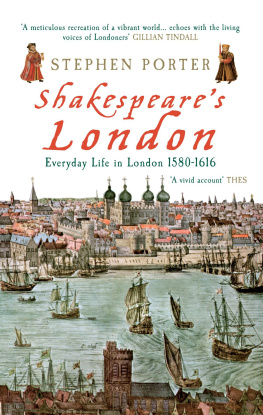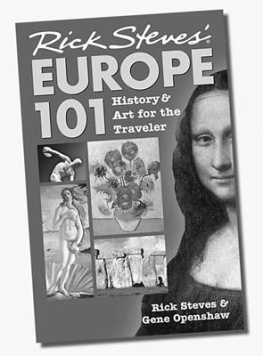First published in Great Britain in 2016 by
Pen & Sword History
an imprint of
Pen & Sword Books Ltd
47 Church Street
Barnsley
South Yorkshire
S70 2AS
Copyright David Thomas 2016
ISBN: 978 1 47382 554 3
PDF ISBN: 978 1 47388 153 2
EPUB ISBN: 978 1 47388 152 5
PRC ISBN: 978 1 47388 151 8
The right of David Thomas to be identified as the Author of this Work has been asserted by him in accordance with the Copyright, Designs and Patents Act 1988.
A CIP catalogue record for this book is available from the British Library
All rights reserved. No part of this book may be reproduced or transmitted in any form or by any means, electronic or mechanical including photocopying, recording or by any information storage and retrieval system, without permission from the Publisher in writing.
Typeset in Ehrhardt by
Mac Style Ltd, Bridlington, East Yorkshire
Printed and bound in the UK by CPI Group (UK) Ltd,
Croydon, CRO 4YY
Pen & Sword Books Ltd incorporates the imprints of Pen & Sword Archaeology, Atlas, Aviation, Battleground, Discovery, Family History, History, Maritime, Military, Naval, Politics, Railways, Select, Transport, True Crime, and Fiction, Frontline Books, Leo Cooper, Praetorian Press, Seaforth Publishing and Wharncliffe.
For a complete list of Pen & Sword titles please contact
PEN & SWORD BOOKS LIMITED
47 Church Street, Barnsley, South Yorkshire, S70 2AS, England
E-mail:
Website: www.pen-and-sword.co.uk
Contents
Acknowledgements
I would like to thank Andrea Thomas for writing the sections on the walks and on buildings that Shakespeare might have seen and also for her photography. Thanks also to Michael Braund for producing the map of London in Shakespeares time. Michael must be the speediest cartographer in the world and amazingly helpful.
Introduction
I n many ways, the London of Shakespeares day was surprisingly like our own it had inns and taverns, sports and the theatre. Shopping, gambling and drinking were as popular then as they are now. People probably smoked more than they do now, although even King James warned of the injurious effects of tobacco. For the better off, sugar was as big a part of their diet as it is for the poor in the twenty-first century, although our dentists are better at dealing with its effects. Just as today you can see City businessmen discussing important issues in Londons many coffee shops, so you would have seen them gathering at New Change to hear the latest gossip and buy and sell. The traffic in London was probably worse than it is now a city designed for people to walk in had become overwhelmed by carts and carriages.
The difference between the Londoners and the country dwellers was becoming increasingly apparent. People in the country saw Londoners as soft and not living the authentic life. They called them Bow-Bell Cockneys and eaters of buttered toast. But at the same time, they loved to read about the dangers of visiting the City. Thomas Dekker and his fellow writers played along with this fear by writing a series of books describing the tricks that would be played on the unsuspecting country man or woman who dared visit the great metropolis.
But if you look at Tudor London as something like a modern city, you will suddenly be brought up short by realising that it was also a medieval city the water supply was, frankly, unreliable. The City was frequently overwhelmed by outbreaks of the plague and other diseases were rife. The citizens enjoyed barbaric sports such as bear baiting and cock fighting and if time hung heavily on their hands, they could go and enjoy a nice execution hanging, burning or beheading, take your pick. It was also a world where status and your position in the hierarchy mattered very much.
Physically much of the London that Shakespeare knew has been destroyed by the Great Fire, redevelopment over several centuries and the Blitz, but there is enough to get glimpses of what he would have seen. Despite the efforts of the Victorians, much of Londons street plan survives and a surprisingly large number of buildings remain that Shakespeare would have been familiar with.
London exists because of and is defined by its river. However, the river Shakespeare knew is quite different from the modern one we see. It was much wider, since the embankments had not been built, and it had fewer bridges London Bridge was the only bridge between the estuary and Kingston. The river was also much busier, bringing food and supplies to the City and carrying thousands of passengers a day up to Windsor or down to Greenwich and Gravesend or simply from Whitehall to the theatres on the south bank. Sadly, one of the great features of Shakespeares river the large flock of swans that gathered there has long gone.
In many ways it was safer than the modern city. There was a moderately effective police force in the form of the Watch and the streets were lit at night. There were a lot more cheats and tricksters on the streets, but these days they have moved to the Internet. Above all, there was no political crime or terror. Queen Elizabeth could enjoy herself on the frozen Thames in company with thousands of her subjects, while King James could attend a cockfight in a pub yard. Neither of these activities would be conceivable today without a heavy police presence and probably a stage-managed audience.
It was, increasingly, a city that welcomed and profited from tourism. By the reign of James I a London season was developing. The better off sort would come up to London in the autumn to enjoy the theatre and the inns, sightseeing and visiting the royal palaces and the historic towns which were a half-days ride or a boat trip away. There were other pleasures too a zoo at the Tower of London, a chance to climb the tower of St Pauls Cathedral or visiting the bookshops in the surrounding streets, or perhaps a boat trip to Greenwich to see the hulk of Sir Francis Drakes GoldenHind. If they wanted, visitors could dress up in dandified clothes and swagger about in Pauls Walk or another fashionable rendezvous. The visitors would stay in town until the spring when they would go home to enjoy the pleasures of the summer but would return next autumn, glad to get away from the tedium of country life. There were other gentry, often younger sons or unmarried older women, who moved to London because it was cheaper it was possible to live in a smaller house or rent rooms and to dispense with most servants.
As a result of this annual influx of visitors, the necessary infrastructure for tourism began to develop. There were inns and taverns to provide accommodation as well as restaurants. It was possible to hire a carriage and driver if you wanted to visit the country or to ride post horses from one inn to the next. There was lots for tourists to do and see, but the Londoners had already cottoned on to the idea of tipping foreign visitors often complained about the necessity to tip virtually everybody.
As London became popular with British tourists, it also began to attract visitors from overseas and facilities were developed for them. There were Italian and French inn-keepers and provision was made for them to worship in their own churches Protestant or Catholic.
We will be making this visit to Shakespeares London in the company of some of the overseas visitors who came and recorded what they had observed. The first visitor we will meet is Alessandro Magno, a Venetian who came in 1562. Next is L. Grenade, who was probably Luis de Granada and a member of a family of horsemen, merchants, royal servants and diplomats who lived in London, the Low Countries and France; he wrote an account of London in 1578. Paul Hentzner, a German lawyer born in 1558, was a tutor to a young nobleman and spent the period 15969 travelling with him through Switzerland, France, England and Italy and published his account of his travels in 1616. Then there is Thomas Platter, a highly self-opinionated Swiss medical student who came in 1599, and Horatio Busino, the chaplain to the Venetian Ambassador, who arrived in 1617.
Next page












